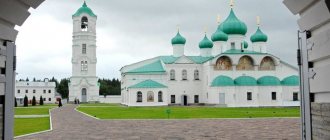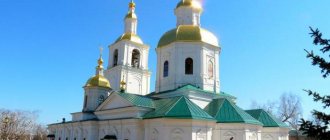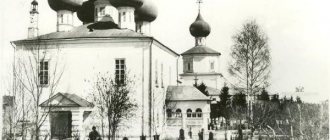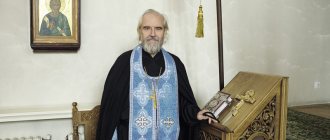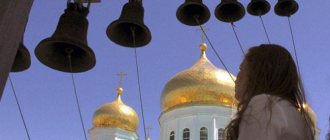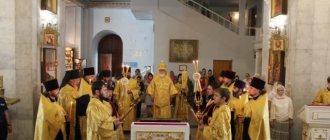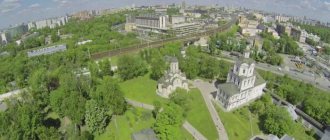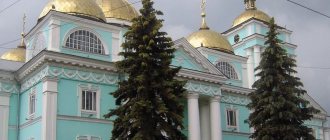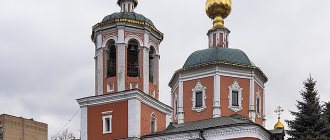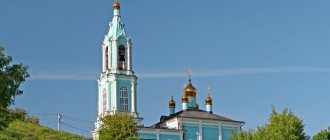Mir
Russia Pskov region Pskov Cathedral of the Nativity of John the Baptist (Pskov) Map is loading…
{"format":"leaflet","minzoom":false,"maxzoom":false,"limit":50,"offset":0,"link":"all","sort":[""], "order":[],"headers":"show","mainlabel":"","intro":"","outro":"","searchlabel":"\u2026 \u0441\u043b\u0435\ u0434\u0443\u044e\u0449\u0438\u0435 \u0440\u0435\u0437\u0443\u043b\u044c\u0442\u0430\u0442\u044b","default":"","import-annotation":false,"width ":"auto","height":"350px","centre":{"text":"","title":"""link":"""lat":57.82582000000000022055246517993509769439697265625,"lon": 28.31848000000000098452801466919481754302978515625,"icon":""},"title":"","label":"","icon":"","lines":[],"polygons":[],"circles":[ ],"rectangles":[],"copycoords":false,"static":false,"zoom":8,"defzoom":14,"layers":["OpenStreetMap"],"image layers":[] ,"overlays":[],"resizable":false,"fullscreen":true,"scrollwheelzoom":true,"cluster":false,"clustermaxzoom":9,"clusterzoomonclick":true,"clustermaxradius":80, "clusterspiderfy":true,"geojson":"","clicktarget":"","showtitle":true,"hidenamespace":false,"template":"","userparam":"","activeicon": "","pagelabel":false,"ajaxcoordproperty":"","ajaxquery":"","locations":[{"text":"\u003Cb\u003E\u003Ca href=\"/palomnik/%D0% A1%D0%BE%D0%B1%D0%BE%D1%80_%D0%B2%D0%BE_%D0%B8%D0%BC%D1%8F_%D0%A0%D0%BE%D0%B6% D0%B4%D0%B5%D1%81%D1%82%D0%B2%D0%B0_%D0%98%D0%BE%D0%B0%D0%BD%D0%BD%D0%B0_%D0% 9F%D1%80%D0%B5%D0%B4%D1%82%D0%B5%D1%87%D0%B8_(%D0%9F%D1%81%D0%BA%D0%BE%D0%B2 )\» title=\»\u0421\u043e\u0431\u043e\u0440 \u0432\u043e \u0438\u043c\u044f \u0420\u043e\u0436\u0434\u0435\u0441\u0442\u0432\u043 0 \u0418\u043e\ u0430\u043d\u043d\u0430 \u041f\u0440\u0435\u0434\u0442\u0435\u0447\u0438 (\u041f\u0441\u043a\u043e\u0432)\»\u003E\u0421\u043e \u0431\u043e\u0440\ u0432\u043e \u0438\u043c\u044f \u0420\u043e\u0436\u0434\u0435\u0441\u0442\u0432\u0430 \u0418\u043e\u0430\u043d\u043d\u0430 \ u041f\u0440\u0435\u0434\u0442\ u0435\u0447\u0438 (\u041f\u0441\u043a\u043e\u0432)\u003C/a\u003E\u003C/b\u003E\u003Chr /\u003E\u003Ca href=\"/palomnik/%D0%A1%D0% B2%D0%BE%D0%B9%D1%81%D1%82%D0%B2%D0%BE:%D0%90%D0%BD%D0%BD%D0%BE%D1%82%D0%B0 %D1%86%D0%B8%D1%8F\" title=\"\u0421\u0432\u043e\u0439\u0441\u0442\u0432\u043e:\u0410\u043d\u043d\u043e\u0442\u0430\u0446\ u0438\u044f\»\u003E\u0410\u043d\u043d\u043e\u0442\u0430\u0446\u0438\u044f\u003C/a\u003E: »'\u0421\u043e\u0431\u043e\u0440 \u 0432\u043e\u0438 \u043c\u044f \u0420\u043e\u0436\u0434\u0435\u0441\u0442\u0432\u0430 \u0418\u043e\u0430\u043d\u043d\u0430 \u041f\u0440\u0435 \u0434\u0442\u0435\u0447\u0438 »' \u2014 \u0435\u0434\u0438\u043d\u0441\u0442\u0432\u0435\u043d\u043d\u044b\u0439 \u0432 \u041f\u0441\u043a\u043e\u0432\u0 435\u043f\u0430\u043c\u044f \u0442\u043d\u0438\u043a\u0430\u0440\u0445\u0438\u0442\u0435\u043a\u0442\u0443\u0440\u044b,\u0441\u043e\u043e\u0440\u0443 \u0436\u0435\u043d\u043d\ u044b\u0439 \u0432\u0442\u0440\u0430\u0434\u0438\u0446\u0438\u044f\u0445 \u041d\u043e\u0432\u0433\u043e\u0440\u043e\u0434\u 0441\u043a\u043e\u0433\u043e\ XII \u0432\u0435\u043a\u0430, \u043e\u0434\u0438\u043d \u0438\u0437 \u04 3f\u0435\u0440\u0432\u044b\ u0445 \u043a\u0430\u043c\u0435\u043d\u043d\u044b\u0445 \u0445\u0440\u0430\u043c\u043e\u0432 \u0441\u0440\u0435\u0434\u043d\u 0435\u0432\u0435\u043a\u043e\ u0432\u043e\u0433\u043e\u041f\u0441\u043a\u043e\u0432\u0430; \u044f\u0432\u043b\u044f\u0435\u0442\u0441\u044f \u043f\u043e\u0434\u0432\u043e\u0440\u044c\u0435\u043c \u041a\u0440\u044b\ u043f\u0435\u0446\u043a\u043e \u0433\u043e \u043c\u043e\u043d\u0430\u0441\u0442\u044b\u0440\u044f","title":"\u0421\u043e\u0431\u043e\u0440 \u0432\u043e \u0438 \u043c\u044f\ u0420\u043e\u0436\u0434\u0435\u0441\u0442\u0432\u0430 \u0418\u043e\u0430\u043d\u043d\u0430 \u041f\u0440\u0435\u0434\u0442\u0 435\u0447\u0438 (\u041f\u0441 \u043a\u043e\u0432)","link":"""lat":57.82582000000000022055246517993509769439697265625,"lon":28.31848000000000098452801466919481754 302978515625,"icon":""}],,"imageLayers":[]}
57.823463; 28.317476
Russia, Pskov, 15th microdistrict
Pskov, Pskov region
Russia
Cathedral of the Nativity of John the Baptist
- the only architectural monument in Pskov, built in the traditions of Novgorod architecture of the 12th century, one of the first stone churches of medieval Pskov; is the courtyard of the Krypetsky Monastery.
History[edit]
St. John the Baptist Convent was founded in 1240 by Princess Efrosinya Rogvoldovna, the aunt of the famous Pskov prince Dovmont. Under the name Eupraxinya, she became the first abbess of the monastery; buried here, in St. John's Cathedral, which from that time became the tomb of the Pskov princesses (and much later, in the 19th century, also of the city governors).
In 1921 the monastery was closed. Worship services resumed 70 years later, in 1991. Restorations: 1948-1949 (architect P. N. Maksimov), 1978-1991 (S.P. Mikhailov, who discovered fragments of painting from the 12th century).
Architecturally, the cathedral is unique: it is the only basilica, three-nave, three-apse church in Pskov, dating back, like the Mirozh one, to ancient, pre-Mongol times.
The roof covering, three helmet-shaped domes, and six pillars in the interior indicate a pre-Mongol Novgorod school (the Pskov ones—a two-span belfry and a vestibule—appeared later).
The interior - also rare for the Pskov tradition - has 6 pillars and lowered girth arches.
The decoration uses an arcature belt on a drum; mysterious round (!) windows in the eastern part of the quadrangle - mysterious portholes on this ancient ship of faith.
It was built with a slight indentation from the bank of the Velikaya River, opposite the confluence of the Pskov River into it. According to legend, the monastery was founded around 1240 locally by the revered princess Euphrosyne, monastically Eupraxia. The blessed princess, the daughter of the Polotsk prince Rogvold Borisovich and the aunt of Prince Dovmont, was married to the prince - adventurer Yaroslav Vladimirovich, who was the son of the Pskov prince Vladimir Mstislavovich. Euphrosyne was rejected by her evil husband, who either fought against the Germans or was friends with them, and finally went to the knights and there married Liflyandka. Her life was tragic, apparently not out of great happiness, she took monastic vows and, having built the Ivanovo Convent in Pskov, she became its first abbess.
Later, Yaroslav called her on a date to the Livonian town of Odempe (Bear's Head), where she was killed by her half-German stepson, Yaroslav's son from a German woman. She was buried in Pskov, in the cathedral of the Ivanovo Monastery, and since then it has become the tomb of the Pskov princesses. Princess Maria, the wife of the Pskov prince Dovmont and the granddaughter of Alexander Nevsky, was buried here. Also, Princess Natalya is the daughter-in-law of Prince Dovmont, the wife of his son David. In 1487, the wife and son of Prince Yaroslav Striga-Obolensky, who died from pestilence, were buried here. In 1811, in the chapel of the cathedral, demolished during the restoration, the Pskov vice-governor Samuil Samuilovich Figner, the father of the famous hero Alexander Figner, commander of the “Vengeful Legion” of the partisan detachment during the Patriotic War of 1812, was buried. The younger brother of the famous partisan left Pskov to join the active army when he was 16 years old. He distinguished himself in the battle of Borodino, and later joined his brother’s partisan detachment.
The Pskov Museum houses a chalice (a tall bowl decorated with enamel) from the Ivanovo Monastery - a gift from the widow of Alexander Figner in memory of her husband.
Like Mirozhsky, the Ivanovo monastery often suffered from enemy invasions, especially in 1615, when it was in the hands of the Swedish king Gustav Adolf. They converted the cathedral into a warehouse. One day there was an explosion, but the cathedral survived.
What to see
The Cathedral of the Nativity of John the Baptist is the only three-nave and three-apse church in Pskov in the Byzantine style. The roof with round zakomaras, helmet-shaped domes, 6 pillars and low arches of the interior are characteristic of Novgorod architecture. The building is stretched from west to east, the facades are divided by pilasters on which the arches of the zakomari rest. The large head on the light drum is shifted to the east, two small ones - to the west.
The only external decor is modest arcature belts under the roof. In the 16th century, a two-bay belfry was built on the southern wall. At first glance, the temple seems disproportionately squat, because over 800 years the ground level has risen by 1.5 meters.
From the previous painting, only fragments of ornaments on pillars and window slopes have survived. An icon-painting workshop is open at the cathedral. A three-tiered carved iconostasis was built, and in the basement the walls and ceilings of the chapel were painted in the name of the Russian new martyrs.
In 2007, Ivanovo Cathedral became a metochion of the St. John the Theologian Savvo-Krypetsky Monastery. It runs a full circle of ministry and runs a Sunday school.
20th century (before the revolution)
The bloody 20th century brought complete ruin to the monastery. But first things first.
The beginning of the century was calm and joyful. Almost 80 people lived in the monastery, of which 22 were monastics, together with the abbess. There were 21 novices. The rest were classified as squirrels and living above the staff.
In 1903, the monastery was surrounded by a high wall. The territory was very vast by the standards of that time - 80 fathoms.
For three years in a row, from 1910 to 1912, Grand Duchess Elizabeth Feodorovna visited the monastery.
In 1915, due to martial law, the monastery housed an infirmary. More than 20 people could have been there. The sisters looked after the sick and wounded.
20th century (recent history)
The monastery was completely destroyed. During the war, the surviving buildings were buried by fire. They were not subject to restoration.
And yet, at the end of the 70s, the restoration of the St. John the Baptist Cathedral was carried out. During the exploration and restoration of the monastery, a treasure with coins and icons was discovered.
In 1991, the cathedral was transferred to the Russian Orthodox Church. And on July 7, the first service was held in the renovated church.
19th century
He appeared as the most eventful and last for the St. John the Baptist Monastery in Pskov.
It all started with the fact that the number of nuns in the monastery began to gradually increase. At the very beginning of the century, some estates were given to the monastery. In particular, these were lands in Novo-Usitovskaya and Polonskaya volosts and lakes for fishing. True, the wealth was taken away 25 years later and cash subsidies were given for them.
In 1845, a one-story warm stone church was built on the territory of the monastery.
The empress made a donation to the tomb of the first abbess in 1859. Maria Alexandrovna donated a carpet to the monastery.
The economy grew. More and more new buildings included a convent. So, in 1864 a bathhouse and laundry were built. A little later - a grain barn. In 1865, a woodshed and an icehouse were erected.
In the 19th century, the monastery had quite a lot of land. All of them were recorded in the monastery books. Also, the income and expenditure Talmuds recorded data on income received from these lands.
In addition to the land that brought a pretty penny to the monastery, there was also a cemetery here. Nuns were buried there, and ordinary people were buried there for a fee.
In 1874, there were 18 monks in the monastery.
In 1882, the bell tower was built with a generous donation from benefactors. The amount spent on construction was more than 4,000 rubles. In addition to money, bells were donated for the construction. And two years later, the merchant widow Catherine donated the tower clock. They cost 1000 rubles.
Another 10 years have passed. A hospital and almshouse began operating at the St. John the Baptist Monastery (Pskov). There were 5 people living in it at the time.
In 1896, repairs were made to St. Andrew's Warm Church. They served there only in winter. And in 1897, renovations were carried out on Ioanno-Predtechensky.
By 1900, work on the construction of a special house was completed. It was intended for the church sacristy, as a prosphora and handicraft room.
The monastery flourished. The 19th century became the brightest in its history after the founding of the monastery.
Origin story
In Pskov, in the Zavelichye region, there once stood a beautiful monastery. The nuns presided over divine services, worked and lived by their own special rules.
The first mentions of this place date back to the 13th century. The wife of Prince Yaroslav Vladimirovich became the abbess and founder of the monastery. Euphrosyne (that was the name of the princess in the world) was forcibly married off. The marriage turned out to be very tragic. The prince was constantly away from home, and in the end he was seduced by a certain girl. And for her sake he left his wife.
Euphrosyne bore the blow steadfastly. She did not despair, she did not commit suicide. And she took up the founding and organization of the women’s monastery of St. John the Baptist (Pskov).
She became the first abbess in the monastery. And she was killed in a vile way. The princess abbess, who was tonsured Eupraxia, was summoned to the Livonian city of Odempe by her ex-husband. The murder was committed by the stepson of the abbess. Her body was transferred to Pskov and buried in a holy place.
XX century (1917-1925)
The revolution did not spare the monastery. The new government did not intend to put up with the existence of the St. John the Baptist Monastery (in Pskov). The nuns are left with only two small houses. The remaining territories are occupied by red troops.
They took everything they could from the nuns. Food, kerosene, property. Everything that had been prepared with great difficulty was now consumed by the troops. But the monastery was not left any means of subsistence, virtually putting it on the brink of hunger and death. Even the petition of the Pskov spiritual consistory did not help.
In 1919, an orphanage was opened in the monastery. And three years later, the monastery was faced with a fact: it was necessary to give all the jewelry to the benefit of the starving. Robes from icons, silver lamps, censers, spoons, saucers, bowls. In general, all valuables were confiscated.
In 1923 the monastery was closed. In 1925, the cemetery was razed to the ground. Now the former monastery housed a village, a playground and a club.
17th century
What happened to the monastery during this period? Previously rich and favored by the princes, she survived many raids. When the city was attacked by the Polish King Stefan, he stopped at nothing. Pskov was burning in fires, and the St. John the Baptist Monastery was no exception.
After the settlement was besieged by the Swedish king Gustav, the holy place was completely plundered. The economy fell into disrepair. It was 1615.
In 1623, the monastery was “taken under the guardianship” of Tsar Mikhail Fedorovich. He, together with Patriarch Philaret, presented the abbess of the Pskov monastery with a letter. It confirmed that the monastery has the right to own the lands granted to it by Prince Dovmont. In addition, the monastery was allowed to independently judge its inhabitants for any offenses except murder and robbery.
These rights were confirmed in 1646. This was done by Tsar Alexei Mikhailovich. And 40 years later, sovereigns Ion Alekseevich and Peter Alekseevich reaffirmed this right.
Rules for visiting the monastery
How one is supposed to enter a holy temple, knowing or not that there was once a nunnery here:
- Women must wear skirts and headscarves. Entry in trousers is prohibited. The longer the robe, the better. You will have to forget about the miniskirt when going to church. Any scarf, according to the taste of the wearer.
- Cosmetics on the face are not allowed. Especially lipstick. You cannot kiss icons with painted lips. And if a woman is about to receive communion, then approaching the Chalice with lipstick on her lips is an absolutely wrong decision.
- As for men, their dress code is trousers and a long-sleeve shirt (sweater). There should be no T-shirts or shorts.
- They come to the service in advance, 10-15 minutes before the start. You will have time to write notes, light candles, and venerate icons.
- You are not allowed to talk loudly, laugh out loud, smoke or drink alcohol on the territory of the cathedral.
- It is strictly forbidden to spit on the ground or husk seeds.
- Check with parishioners or church officials in advance what time the service starts.
- Remember that this is a monastery courtyard. And you need to behave accordingly.
